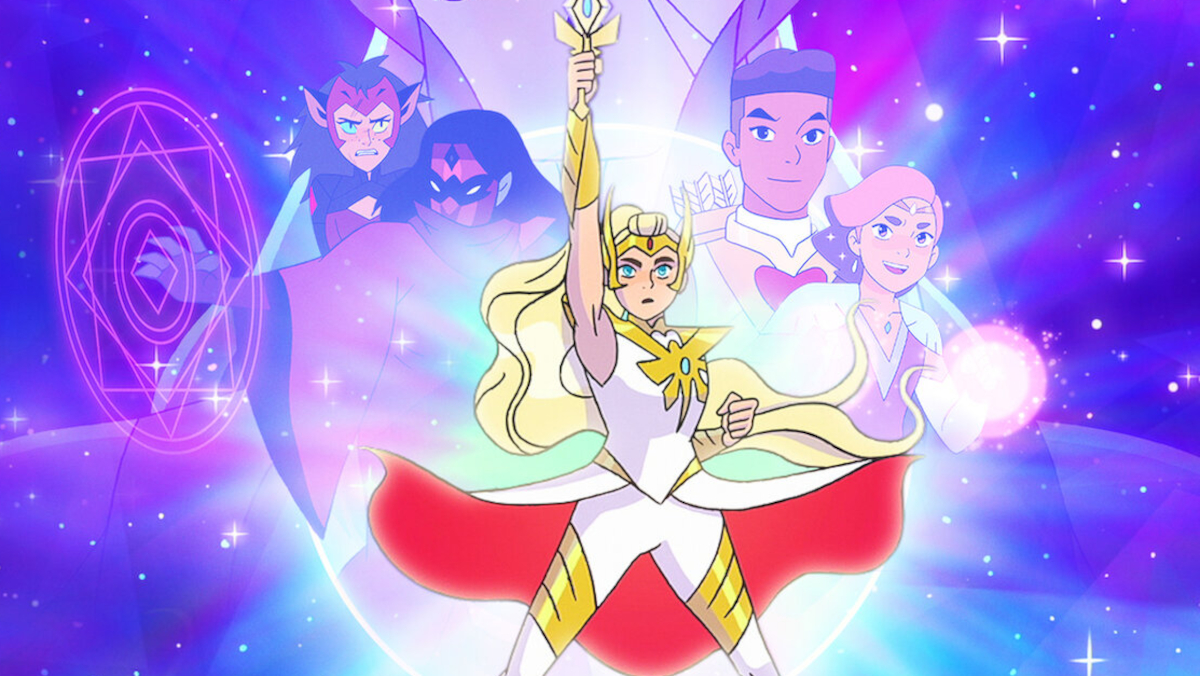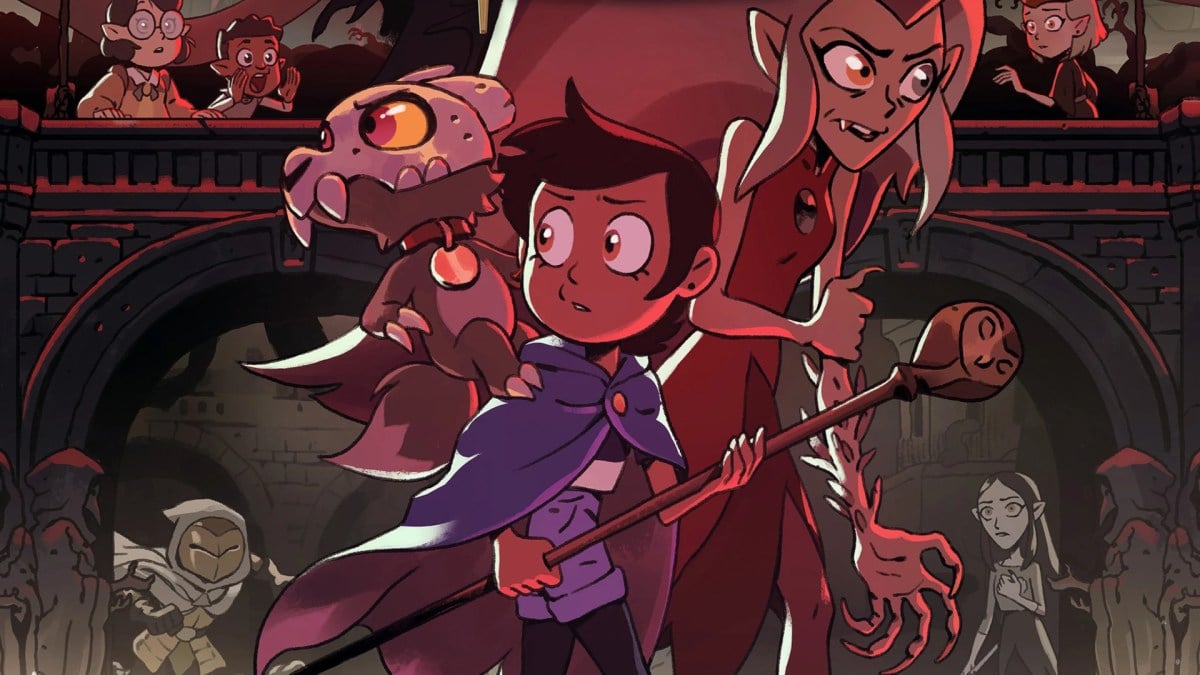A new day dawns on fandom Twitter, and this time, the discourse has landed on a fresh exciting genre term: “sweetweird.”
Coined by sci-fi and fantasy novelist Charlie Jane Anders, “sweetweird” describes a certain kind of media that centers the loving and nourishing power of friendship in a strange, bizarre, and difficult world.
Anders introduced the term in her 2021 autobiographical creative work Never Say You Can’t Survive, but “sweetweird” really took off on Twitter after she penned a newsletter on the genre over the weekend. Her work has since caused an online kerfuffle about art, aesthetics, and whether “sweetweird” is a good or bad aesthetic movement for science-fiction and fantasy.
What is “sweetweird”?
“The core idea of sweetweird is: the world makes no sense, but we can be nurturing, frivolous and kind,” Anders writes in “The Sweetweird Manifesto.” “We don’t have to respond to the ludicrous illogic of the world around us by turning mean and nasty, or by expecting everyone else to be horrible. At the very least, we can carve out friendly, supportive spaces in the midst of chaotic nonsense, and maybe help each other survive.”
Anders argues that sweetweird works go against the heteronormative idea that the world has to make sense. Rather, the “unrealness of our consensus reality liberates us,” she writes, giving way to “decency without conformity, joy that doesn’t depend on a false sense of stability.” The genre looks in the face of trauma and says people should hold closer onto each other, not grow distant.
As you can imagine, community, interpersonal redemption, and chosen family are prominent themes in queer cartoons and SFF narratives. Anders argues this isn’t a coincidence. Queer stories tend to be sweetweird because “queer culture has always prized chosen family, and queers have always seen the illogic at the heart of heteronormativity and cisnormativity.” She lists Adventure Time as one of the genre’s founders, with contemporary works like Our Flag Means Death, The Owl House, and Star Trek: Lower Decks all fitting the sweetweird criteria. Steven Universe, She-Ra and the Princesses of Power, and Everything Everywhere All at Once also count.
“The real world is only going to keep getting more nonsensical, as we grapple with the ongoing slow-motion compound apocalypse. And we’ll keep finding comfort in stories where people comfort each other, without finding some miraculous logic underlying their worlds,” Anders writes. “Things are going to be extremely weird no matter what we do — but we have the power to make them sweet, as well.”
Is “sweetweird” just “squeecore”?

Is Anders’ term about to take off? Probably not. A quick look at fandom and SFF Twitter today reveals a lot of mixed feelings around “sweetweird” and its manifesto. Comparisons abound, with users complaining “sweetweird” is already “hopepunk,” a niche genre term for speculative fiction that takes an optimistic look toward a bleak, dystopian future. Others go one step further and say sweetweird is just “squeecore” in disguise.
For the uninitiated, Rite Gud podcast’s Raquel S. Benedict and The Podhand host J.R. describe squeecore as a “very uplifting and upbeat” didactic and dominant movement in SFF, rooted in a deeply neoliberal conception of right and wrong. Squeecore worships happy endings, leans into comfortable and cozy storytelling, and generally trades in tokenized representation of marginalized characters. It’s filled with cringey humor. It’s also highly marketable, and it remains the most popular aesthetic in mainstream SFF today, as the two argue.
It’s difficult to nail down what, exactly, is “squeecore.” Oft-cited examples include Becky Chambers’ Wayfarers novels and Tamsyn Muir’s Locked Tomb series. But even these works are hotly debated by SFF fans. Is Wayfarers too comfortable and cozy, or is it merely a light-hearted adventure series? Is Locked Tomb squeecore for its Tumblr-esque sense of humor, or is it simply a quirky lesbian sci-fi story about trauma, grief, and death? In general, it seems there’s only one thing the entire SFF community can agree on as squeecore: Joss Whedon’s portfolio.
In defense of enjoying children’s cartoons

Much of the anxiety around squeecore and sweetweird and whatever other term you’d like to use is rooted in anxiety about Americans becoming simpletons. Are our artistic preferences becoming immature? Are queer adults becoming too fixated on feel-good stories? Are they too caught up in children’s cartoons and escapism to experience real art?
Anders admits that she enjoys sweetweird because she “burned out” on “‘grimdark’ storytelling that revels in nastiness and extreme violence.” Perhaps this, more than anything, is why critics are so concerned with the sweetweird and squeecore connection. There’s so much tension in contemporary queer pop culture criticism around enjoying light-hearted content, lest Steven Universe and She-Ra shield us from reality’s biggest problems.
But cycling between artistic aesthetics is a perfectly normal part of life. Art’s job isn’t to constantly challenge us by showing us every single worst aspect of the human experience. Art has no job at all. It exists to express, to elicit emotion, to be experienced for its own sake. “Grimdark” work lost its appeal on myself, for example, when I had gone through enough traumatic bullshit during the pandemic to justify a break from stories about people getting robbed and killed in a sad sack world. There will always be time for those stories when life is a little less stressful.
There is, to be clear, an intense, centralized corporate control over American pop culture going on right now by Disney, Netflix, and Microsoft. These companies set the agenda for artistic aesthetics de facto. When a Marvel film hits theaters, the MCU blocks out any other viewing options on the big screen in most American theaters, as Scorsese famously commented. In the same way, it’s certainly true that these companies are pushing a lot of high-profile cartoons, movies, TV shows, and video games that feature simplistic, black-and-white morality that’s highly marketable to both kids and adults. This kind of content tends to oversaturate the market.
But if squeecore is highly neoliberal, then sweetweird is its opposite. Anders writes about a politics of communal thinking and queer joy in the face of institutional collapse, where communal bonds hold through even when people fuck up and make mistakes. In comparison, Benedict and J.R.’s squeecore has far too much faith in institutions, sees the world in terms of simplistic right and wrong, and is, essentially, about good people doing good and having a good time while bad people do bad and have a bad time. Sweetweird media, by Anders’ definition, is far more skeptical. Think Nimona, the exact kind of series that would probably get labeled as squeecore, even though it’s anything but.
When discourse pops up around “hopepunk” and “sweetweird” and “cottagecore” and all these other strange movements descriptions, genre taxonomy becomes splitting hairs. Pop quiz: Would you consider Adventure Time more or less squeecore than Close Enough? Is Smiling Friends sweetweird because of its emphasis on friendship, or is it too edgecore? Is Loki still squeecore since it’s part of the MCU, even though it’s about a villain’s deep personal transformation? Or are we really just spilling ink over microterms most people don’t use while we’re ignoring the larger issue of how market trends are increasingly coming under the control of a select few major companies? Seriously, we’re very close to a publishing monopoly in U.S. fiction as is.
When it comes to genre dominance, today’s theoretical squeecore is tomorrow’s theoretical grimdark. The market demands the dominant aesthetic. So let’s not pile on a queer writer’s take-it-or-leave-it work of genre criticism highlighting aesthetic similarities between stories across mediums. At the end of the day, genre taxonomy is best defined in hindsight. But corporate monopolization over our bookshelves and theater marquees is a far different story.
(Featured image: Disney)
Want more stories like this? Become a subscriber and support the site!
—The Mary Sue has a strict comment policy that forbids, but is not limited to, personal insults toward anyone, hate speech, and trolling.—









Published: Jun 6, 2022 04:24 pm